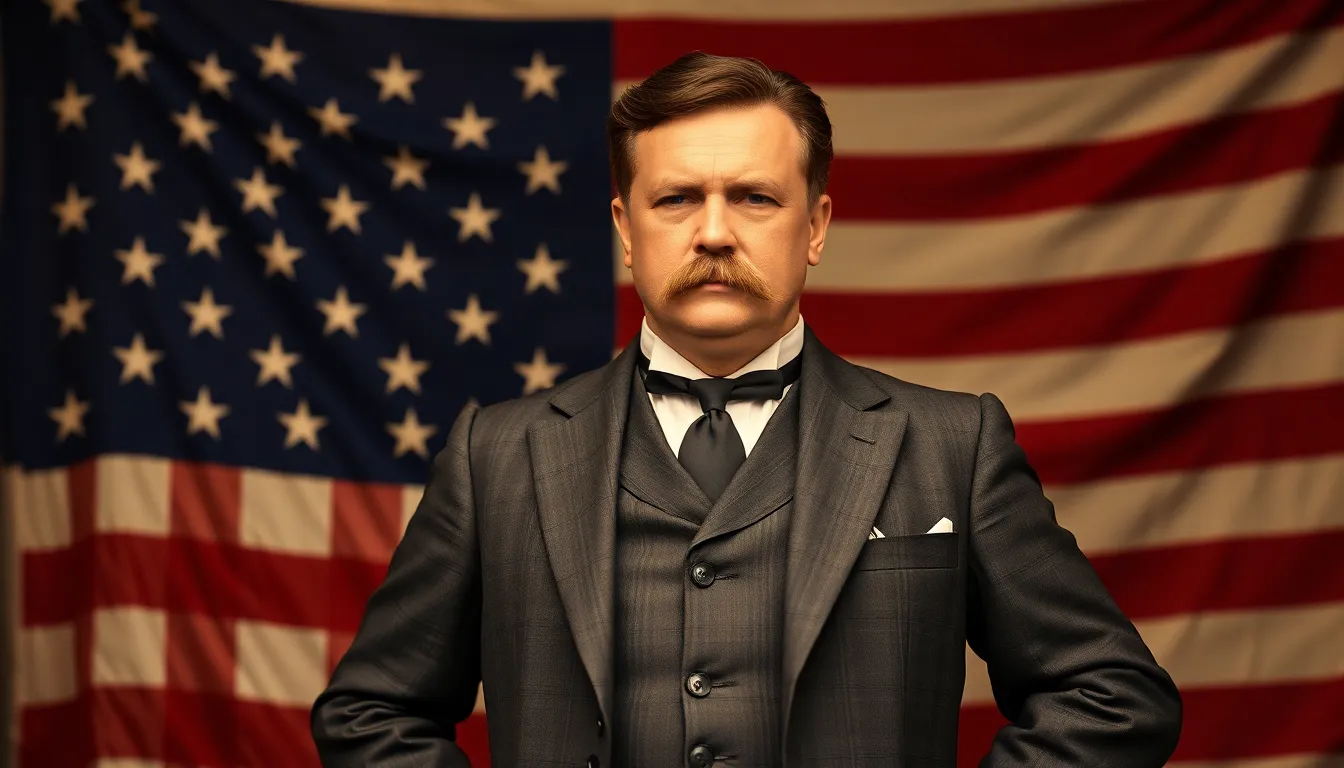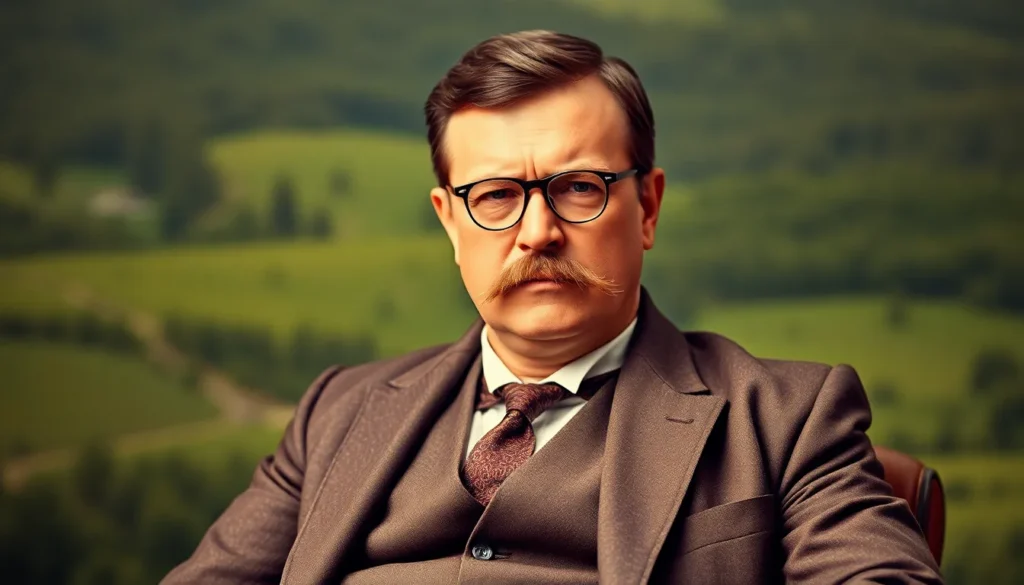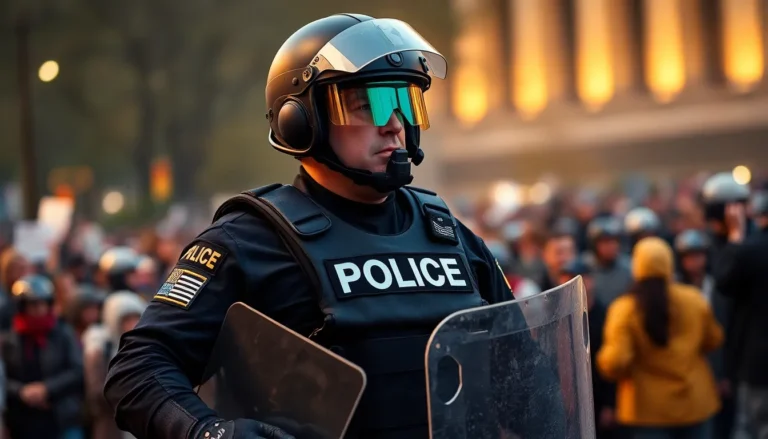The life of Theodore Roosevelt was nothing short of extraordinary. This larger-than-life figure not only led the nation through a transformative era but also wrestled bears and championed conservation like a true outdoorsman. But every great adventure has its end, and the question of when this iconic president took his final bow is one that intrigues many.
On January 6, 1919, the world bid farewell to Roosevelt, marking the end of an era filled with bold policies and even bolder personalities. His legacy continues to shape American politics and culture, leaving many to wonder how one man could pack so much action into a single lifetime. Dive into the details of Roosevelt’s last days and discover the impact he still has on the world today.
Table of Contents
ToggleOverview of Teddy Roosevelt’s Life
Theodore Roosevelt, born on October 27, 1858, served as the 26th President of the United States from 1901 to 1909. Known for his vibrant personality, Roosevelt embraced many roles throughout his life, including soldier, author, and naturalist. His adventurous spirit led him to explore the American West and promote national parks.
During his presidency, effective leadership prompted significant reforms. Roosevelt championed progressive policies, advocating for consumer protection and trust-busting regulations. His actions laid the groundwork for modern American politics, emphasizing social justice and environmental conservation.
Beyond politics, Roosevelt’s enthusiasm for the outdoors propelled conservation efforts that established national parks and monuments. His dedication to preserving America’s natural landscapes resulted in the creation of over 230 million acres of public land. Such achievements highlighted his belief in stewardship and sustainability.
Roosevelt’s life, marked by resilience and determination, showcased an unwavering commitment to public service. Notable events, such as leading the Rough Riders during the Spanish-American War, illustrated his willingness to take bold risks. His energy and zeal resonated with citizens, inspiring generations to engage with civic responsibility.
In later years, Roosevelt continued to influence American discourse, even after leaving office. He remained active in global affairs, advocating for peace and diplomacy. The impact of his contributions to society and politics endures, shaping both contemporary issues and public opinion.
The ending of this remarkable life on January 6, 1919, signaled the close of an impactful era. Following his death, Roosevelt’s legacy lived on through his writings and the policies he championed. His vision for America continues to inspire aspirations for leadership and environmental stewardship.
Key Events Leading to His Death

The final years of Theodore Roosevelt’s life were marked by challenges that impacted his health and legacy. Notable events during this period contributed to the decline in his well-being.
Health Issues
Declining health became apparent in Roosevelt’s later years. Following his presidency, he faced multiple health problems, including high blood pressure and symptoms of cardiovascular disease. Frequent bouts of illness affected his energy levels and ability to engage in activities he enjoyed. In 1918, complications arose from pneumonia, which he contracted after a strenuous trip to South America. Despite his robust nature, Roosevelt’s health declined significantly, highlighting the toll his adventurous lifestyle had taken over the years.
Final Years in Office
Transitioning into the role of an elder statesman, Roosevelt remained influential even after his presidency. He actively campaigned for progressive causes and remained outspoken on various issues. Multiple speaking engagements took place, demonstrating his relentless spirit. However, fatigue became more evident, and he often struggled to maintain his previous vigor. His involvement in the 1912 presidential election underscored his commitment, despite health setbacks. Tragically, these final years set the stage for the health decline leading to his death on January 6, 1919, marking the end of a remarkable chapter in American history.
Circumstances Surrounding His Death
The final years of Theodore Roosevelt’s life highlighted his struggle with health issues. High blood pressure and cardiovascular disease increasingly affected his vitality. A strenuous trip to South America in 1918 considerably worsened his condition, resulting in pneumonia. Despite facing these challenges, Roosevelt remained engaged in public life, campaigning for progressive causes.
He participated in the 1912 presidential election, showcasing his commitment to political engagement even in declining health. Supporters noted that his spirit remained unyielding, reflecting his resilient character. As January 1919 approached, Roosevelt’s condition deteriorated significantly, leading to increasing concerns among family and friends.
On January 6, 1919, Roosevelt passed away at the age of 60, marking a significant moment in American history. His death occurred at his home in Oyster Bay, New York, surrounded by family. The nation mourned the loss of a prominent leader who shaped American politics. Tributes poured in, celebrating his legacy as a reformer and naturalist.
Remembering Roosevelt’s contributions to conservation and progressive reforms became a key theme in public discourse following his death. His impact on national parks and environmental policies remained evident long after his passing. Reflecting on these circumstances offers insight into the life of a man whose influence endures, shaping modern America.
Public Reaction to His Passing
The death of Theodore Roosevelt on January 6, 1919, evoked a profound sense of loss across the nation. Newspapers across the U.S. published editors’ reflections, praising his impactful life and leadership. Millions mourned his passing, recognizing him as a transformative figure whose influence extended beyond politics.
Funeral services took place on January 8, 1919, and thousands of people gathered in Oyster Bay, New York, to pay their final respects. Family members described an atmosphere filled with sorrow, as friends and admirers expressed their grief. Flags flew at half-mast on public buildings, demonstrating a collective loss felt by many.
Public tributes poured in from various sectors, including prominent leaders and citizens alike. In Washington, D.C., various organizations held memorial gatherings to honor his achievements. Many commemorated his dedication to conservation, reform, and civic duty, highlighting how he reshaped American values.
Schools and institutions organized events focused on Roosevelt’s legacy, reflecting on his contributions to national parks and consumer protections. Politicians recognized the void left in progressive movements as they sought to align with Roosevelt’s ideals. Discussions about his environmental policies surged, emphasizing the importance of his work in conservation.
Historians noted that Roosevelt’s death marked the end of an era in American politics, where vigorous activism and engagement were at the forefront. His passing led to reflections on the moral responsibilities of leadership, reigniting discussions on democracy and reform. Ultimately, his enduring influence shaped American identity, fostering a continued dialogue about civic engagement and social justice long after his death.
Legacy of Teddy Roosevelt
Teddy Roosevelt left behind an enduring legacy, shaping both environmental policy and progressive reforms. Through his presidency, he championed significant legislation aimed at consumer protection and corporate regulation. Establishing over 230 million acres of national parks and monuments demonstrated his dedication to conservation. Environmental stewardship became a cornerstone of his influence, inspiring future leaders to prioritize sustainability.
His commitment to social justice and reform resonated across generations. Civic organizations and institutions continue to draw inspiration from his call for active citizenship. Figures in contemporary politics reference Roosevelt’s vision when advocating for social change, highlighting his relevance in today’s discussions.
Public memorials and educational events honoring his life showcase the deep appreciation for his contributions. Schools frequently incorporate his ideals into curricula to promote civic responsibility among students. Markers of his influence remain visible in preserved natural spaces, emphasizing the importance of protection for future generations.
Historical analyses reveal that Roosevelt’s approach to leadership transformed American political discourse. His robust activism set a precedent for subsequent reform movements. Engaging with global issues, he pushed for diplomacy and multilateral efforts, leaving a significant mark on international relations.
His lasting impact on American identity evokes reflection on active citizenship and the responsibilities of public service. Discussions surrounding his legacy frequently highlight the values he embodied, including resilience, courage, and commitment to the greater good. Roosevelt represents a pivotal figure who fostered a tradition of advocacy within the United States, influencing countless individuals to engage in public life.
Theodore Roosevelt’s passing on January 6, 1919, marked the end of an influential era in American history. His remarkable contributions to conservation and progressive reforms continue to resonate today. The widespread mourning and tributes following his death reflect the profound impact he had on the nation.
Roosevelt’s legacy persists through ongoing discussions about civic engagement and social justice. His commitment to public service and environmental stewardship inspires new generations to advocate for change. As society navigates contemporary challenges, Roosevelt’s ideals remain a guiding force, reminding individuals of the importance of active citizenship and dedication to the greater good.








